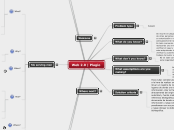作者:Brian Rubinaccio 10 年以前
238
Web 2.0 Plagio
Identifying and articulating a problem comprehensively is essential for effective problem-solving. Inadequate research or vague descriptions often lead to solutions that fail to address the core issues.

作者:Brian Rubinaccio 10 年以前
238

更多类似内容
You can continue to develop this map without the Smart Map wizard by saving it as a normal Mindomo map.
When have a comprehensive description of the problem, you can move towards finding solutions. Consider a brainstorm as a next step, using the Brainstorming Toolbox Smart Map.
You can delete this topic from the saved map.
Researching and describing a problem clearly is the foundation for solving it. Solutions based on incomplete research or poor descriptions can often fail to reach the root causes.
This Smart Map helps you to research and describe a problem from a number of different angles. It contains a mix of factual information-gathering tools and lateral thinking techniques, to develop perspectives that can point towards solutions.
You can use this map individually and in collaboration with others. It is vital to get consensus on the actual problem you are facing, otherwise there may be no consensus on the solution. Putting the descriptions together in one place helps you to explain and agree upon the basis for finding and evaluating solutions.
You can delete this topic from the saved map.
Be the problem is a popular technique for understanding problems. It means developing a character for the problem and describing its nature as if it were a person.
Can you find analogies for this problem?
The underlying characteristics of a problem can sometimes be clearer when it is taken out of context.
"Six Serving Men" is based on Rudyard Kipling's poem, which begins:
''I keep six honest serving men
(They taught me all I knew);
Their names are What and Why and When
And How and Where and Who.''
We can profile a problem and perhaps discover more about it by asking structured questions.
Impact analysis looks at who is affected by the problem - what the consequences are, rather than the causes.
For analytical problems, root cause analysis can help to unravel indirect causes of problems, leading to more effective solutions. One way to do this is to keep asking "Why?" down to five levels, to understand the reasons behind the reasons.
How will you know when you have solved the problem?
* What will a successful resolution look like?
* How will you filter and assess potential solutions?
* How will you verify that the issue has been solved?
You might want to return to the solution criteria several times as you develop the definition of the problem.
In identifying the problem and the probability of a solution, what assumptions are you making?
Assumptions can sometimes be hard to see or accept. For example, if the "problem" is that sales of a certain product are too low, you may naturally aim to increase sales. You are ''assuming'' that the market demand for this product will continue. But if the demand disappeared overnight in a storm of negative publicity, then the original problem and solution also change. So the problem and logical solution are partly based on an assumption.
What other information might help, but is not available today?
* How would it help?
* How could you obtain it?
* Can you work without it?
* What are the risks or consequences of not knowing?
* Who else might have further information and insight?
Factual data about the problem
Whether this is mainly a creative or analytical problem